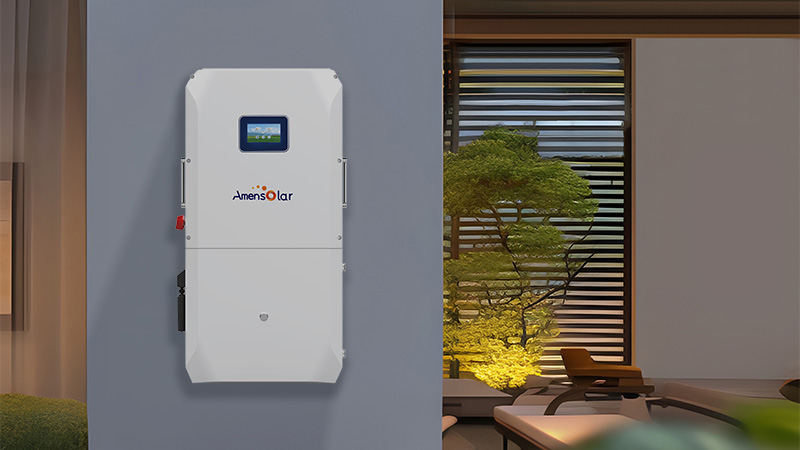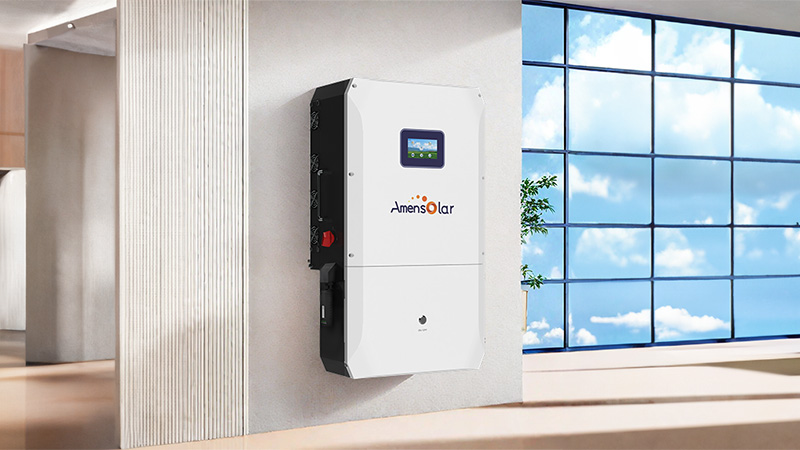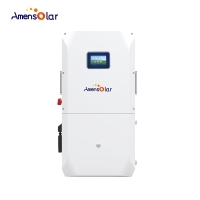A Guide to Solar Inverter Sizing for American Households
When American households embark on the journey towards green energy transition, solar power systems emerge as a popular choice. However, in the process of setting up such a system, selecting the right size of the solar inverter becomes a crucial step. The solar inverter, though seemingly a minor component, actually holds the key to converting the direct current generated by solar panels into alternating current for daily household use. Its proper sizing directly affects the efficiency of the entire solar power system, the energy output, and the long-term performance. This article will provide American households with a detailed analysis on how to choose a suitably sized house solar inverter.
An Overview of Solar Power Systems
Before diving into the selection of inverters, it is essential to have a clear understanding of the components of a solar power system. Solar panels, as the front-end devices for energy collection, have their output power rated in watts. The invertermust match with them precisely to ensure efficient energy conversion without losses. The energy consumption of a household is the key factor in determining the scale of the solar panel array, which in turn directly influences the required size of the inverter.

Current Household Energy Consumption
According to relevant statistics, the average American household consumes about 10,000 kilowatt-hours of electricity annually, which translates to approximately 27 kilowatt-hours per day. Faced with such a significant demand for electricity, many homeowners are turning to solar power in the hope of reducing their dependence on the traditional power grid. The scale of the solar panel array needs to be determined based on the actual electricity consumption of the household, which then leads to the determination of the appropriate inverter size.
Key Points for Inverter Sizing
Generally speaking, a home solar power system is designed to meet 80% to 100% of a household’s annual electricity needs. Solar panels can produce peak power during sunny periods, and the **inverter** must be capable of handling this peak power. To cope with possible fluctuations in power generation, most solar power systems are designed with an **inverter** capacity that exceeds the peak power output of the panels by 10% to 20%. For a typical American household, a solar panel array of 6 to 8 kilowatts is quite common, and the corresponding **inverter** size usually ranges from 5 to 10 kilowatts. Among them, a 5 - kilowatt **inverter** is suitable for small - scale solar panel arrays, while a 10 - kilowatt inverter is more appropriate for larger arrays.
The Importance of Inverter Size
The precise control of inverter size is of vital importance. If the inverter is oversized, it will be idle during periods of low solar power generation, causing waste of resources and low efficiency. On the contrary, if the inverter is undersized, it will not be able to process all the power generated by the solar panels, resulting in energy loss and thus reducing the efficiency of the entire system.
Special Considerations for Different Inverter Types
In some cases, homeowners might consider a hybrid inverter. A hybrid inverter combines the functions of a traditional inverter with energy storage capabilities, allowing excess solar energy to be stored for use during periods of low sunlight or high demand. For example, a 12kw hybrid inverter could be a suitable choice for larger households with significant energy needs and ample roof space for a larger solar array. This type of inverter can enhance the overall energy independence of the household.

For those with more extensive solar installations, a 16kw inverter might be necessary. Such high-capacity inverters are designed to handle larger solar arrays and can support the energy needs of larger households or even small commercial setups. These inverters are particularly useful in regions with high solar irradiance, where the potential for energy generation is maximized.
Conclusion
Selecting a properly sized inverter for American households is key to achieving efficient energy output and long - term stable operation of the system. Generally, for households equipped with a 6 - to 8 - kilowatt solar panel array, an inverter size of 5 to 7 kilowatts is more suitable. However, when making the final decision, it is also necessary to take into account a variety of factors such as local climate conditions, available roof space, and specific electricity consumption habits of the household. Working with professional solar system installers can ensure accurate sizing and efficient installation of the solar power system, bringing the best performance and long - term energy - saving benefits to the household.

 N3H-X16US 16KW | Split Phase |...
N3H-X16US 16KW | Split Phase |...  N3H-X12US 12KW | Split Phase |...
N3H-X12US 12KW | Split Phase |...  N3H-X10US 10KW | Split Phase |...
N3H-X10US 10KW | Split Phase |...  N3H-X8US 8KW | Split Phase | ...
N3H-X8US 8KW | Split Phase | ...  N3H-X5US 5KW | Split Phase | ...
N3H-X5US 5KW | Split Phase | ...  N1F-A3US 3KW | Split Phase | ...
N1F-A3US 3KW | Split Phase | ...  N1F-A12US 12KW | Split Phase |...
N1F-A12US 12KW | Split Phase |...  N1F-A6.2P 6.2KW | Single Phase...
N1F-A6.2P 6.2KW | Single Phase...  N1F-A6.2E 6.2KW | Single Phase...
N1F-A6.2E 6.2KW | Single Phase...  AMF16000 51.2V | 16KWH | Floo...
AMF16000 51.2V | 16KWH | Floo...  AMW10240 51.2V | 10.24KWH | W...
AMW10240 51.2V | 10.24KWH | W...  LFP 16kWh / LV 51.2V | 16KWH | Floo...
LFP 16kWh / LV 51.2V | 16KWH | Floo...  S52300 51.2V | 16KWH | Stac...
S52300 51.2V | 16KWH | Stac...  S52200 51.2V | 10.24KWH | S...
S52200 51.2V | 10.24KWH | S...  AML12-200 12.8V Series LifePo4...
AML12-200 12.8V Series LifePo4...  AML12-100 12.8V Series LifePo4...
AML12-100 12.8V Series LifePo4...  AML12-120 12.8V Series LifePo4...
AML12-120 12.8V Series LifePo4...  AML12-150 12.8V Series LifePo4...
AML12-150 12.8V Series LifePo4... 